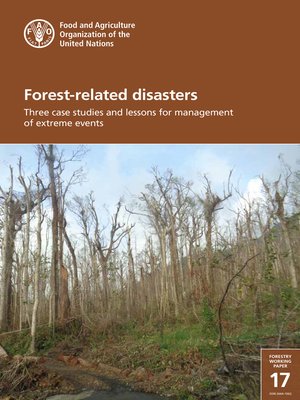Forest-Related Disasters
ebook ∣ Three Case Studies and Lessons for Management of Extreme Events
By Food and Agriculture Organization of the United Nations

Sign up to save your library
With an OverDrive account, you can save your favorite libraries for at-a-glance information about availability. Find out more about OverDrive accounts.
Find this title in Libby, the library reading app by OverDrive.



Search for a digital library with this title
Title found at these libraries:
| Library Name | Distance |
|---|---|
| Loading... |
This report examines how forests contribute to or suffer from disasters. Three events are examined: the tempest Gudrun (Sweden, 2005); the Tohoku earthquake and tsunami (Japan 2011); and the 2017 firestorm in Chile.
Forests are "victims" of disaster when unable to provide services required by society and cannot recover within a relevant timeframe. Trees damaged may host insect pests that may kill healthy trees or become fuel for forest fires. Fallen trees also damage infrastructure.
Extreme events can change the cultural and economic life of small states/islands and/or cause the breakdown of societal services.
Disasters affect timber supplies, distorting market functioning. Damaged timber is susceptible to attack from insects and fungi, quickly losing value, and insect attacks may spread to healthy trees.
Forests can mitigate disasters by e.g. reducing the intensity of tsunamis or stabilizing slopes. Single trees may become important refuges for people during floods.
Key messages include:







